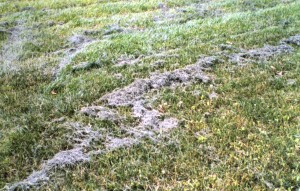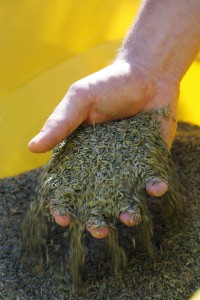Mow the Lawn or Go to the Dentist?
May 22nd, 2012
One of the few yard-care jobs I really don’t like is mowing the lawn.
It’s boring, wasteful and unproductive.
Apparently, I’m not alone.
Consumer Reports magazine surveyed 1,000 adults about lawn care for its May 2012 edition, and it turns out that only 7 percent said they’d pick lawn work as their preferred household chore.
It seems a lot of people would rather do a lot of other stuff than cut the grass one more time.
Almost half of the respondents said they’d rather shop for groceries than work on the lawn. Forty-one percent said they’d rather do the laundry, 38 percent said they’d rather clean the house, and 17 percent said they’d even rather go to the dentist.
If that’s the case, then what I don’t understand is why we devote so much space to grass.
If we’re going to have go out there moaning and whining, we might as well at least get something productive out of it, like vegetables or cut flowers.
CR’s survey paired nicely with an article on “The Slacker’s Guide to a Great Lawn.” It’s an interesting piece on how you can save 60 hours a year on yard care without sacrificing lawn quality. (Subscribe online at www.consumerreports.org.)
The article got me thinking about the myths and misfires that cause us to waste so much time and money on the lawn. Now that the lawn is in peak-growth mode, it’s a good time to realize the bad things we’re doing that we shouldn’t and the good things we should be doing that we’re not.
I can think of three prime examples in each camp:
Things You’re Probably Doing That You Shouldn’t
1.) Bagging the grass clippings. What a waste of time and nutrients. Those clippings are loaded with assorted nutrients mined from the soil. Let them on the lawn to decay and return the nutrients. No, they don’t cause thatch. Just cut often enough that there aren’t so many that they’ll mat down the lawn.
2.) Over-fertilizing. We’ve been talked into believing that we’ve got to fertilize four or five times a year in order to have a dark-green thick carpet of a lawn. Once or twice a year gives perfectly good results, and I’ve seen lawns do just fine with no supplemental feeding.
3.) Irrigating shallow and often. Besides using an expensive and precious resource for a cosmetic and arguably wasteful purpose, shallow watering encourages shallow rooting, which can make a lawn less able to survive dry weather. Lawns typically bounce back fine even after spending a month brown during a summer drought. Frequent irrigation can also encourage lawn diseases.
Things You Should Be Doing but Probably Aren’t
1.) Buying better seed. I was just at a new house where the owner got a lawn put in by a landscaper using crappy tall fescue in the mix. It looked sickly, coarse and light green compared to the neighbor’s new lawn, which was installed by a different landscaper using better seed. All grass seed is not created equal. The good stuff is only a little more expensive and well worth it. Get the best quality you can find at the garden center or seek out the top-tested types in university trials (results available at www.ntep.org).
2.) Cut high. Grass is a plant. The more you keep chopping off, the more energy the plant uses regrowing, and the less chlorophyll that’s left to produce that energy. Move the mower setting up, and cut at least 3 inches high, or better yet, 4 or 5 inches. Remember, it’s the evenness after a cut that makes the lawn look good. Scalping is bad and also increases weed problems and moisture evaporation from the soil.
3.) Keep the mower blade sharp. When’s the last time you sharpened your blade? Seriously. The rule of thumb is every 25 hours of cutting, which is typically twice a year in an average yard. A dull blade tears the tops off of grass plants instead of neatly shearing them, and that opens the lawn up to drying out faster and greater chance of disease.










